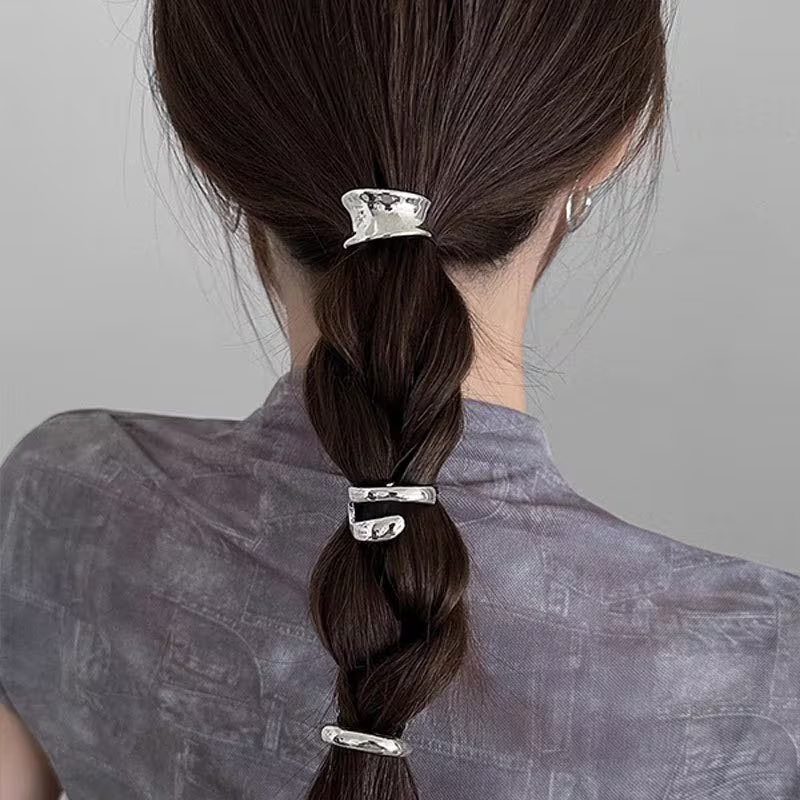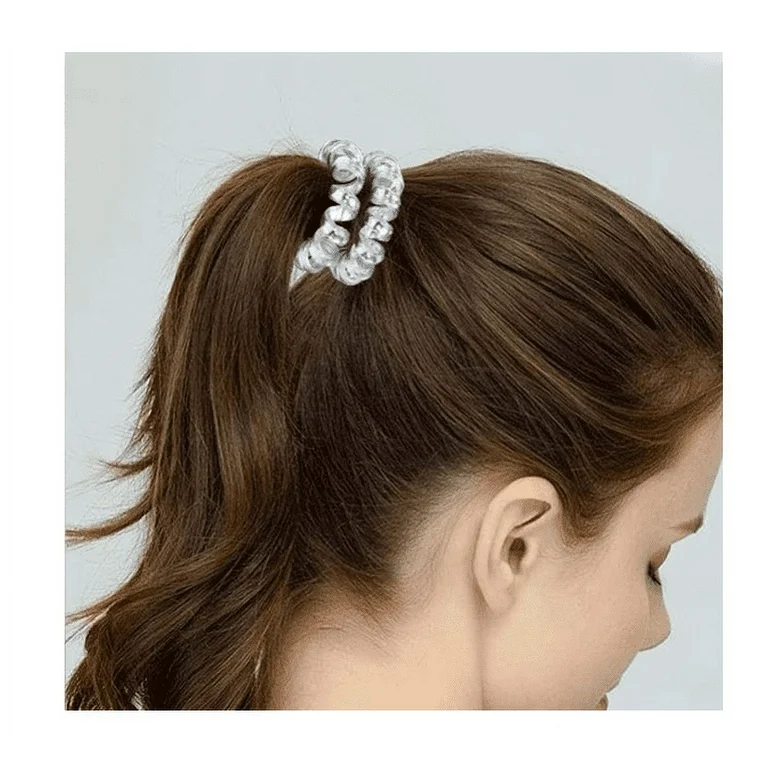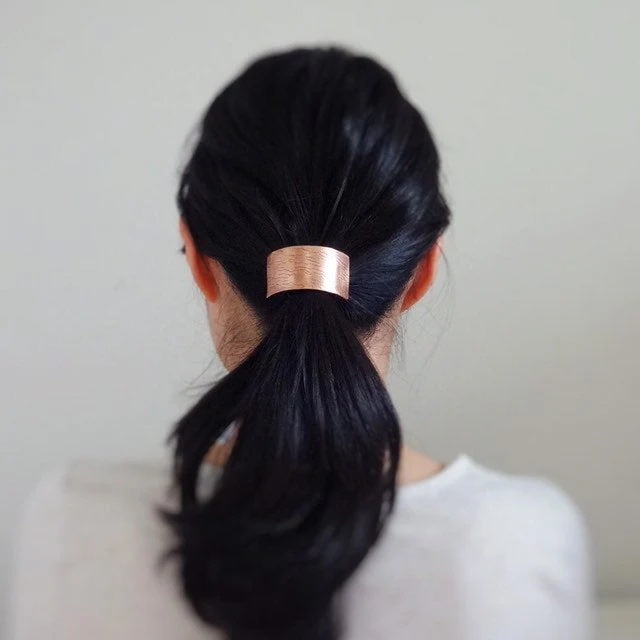
Metal Hair Tie: Style, Durability, and Versatility
The Rise of Metal Hair Ties in Fashion
Metal hair tie have emerged as a stylish and practical alternative to traditional elastic bands. These sleek accessories offer a unique blend of functionality and fashion, appealing to those who seek both style and durability in their hair accessories. Unlike their elastic counterparts, metal hair ties provide a sturdy hold without causing damage or breakage to the hair. They come in various designs, from simple minimalist bands to intricate, decorated pieces that double as jewelry. The popularity of metal hair ties has grown significantly in recent years, with fashion-forward individuals and celebrities alike embracing this trend.
These accessories work well with a range of hairstyles, from casual ponytails to elegant updos, making them versatile choices for everyday wear and special occasions. Moreover, metal hair ties often feature in high-end fashion shows and editorial shoots, further cementing their status as must-have accessories. Their durability also makes them eco-friendly alternatives to disposable elastic bands, aligning with the growing trend of sustainable fashion. As more people discover the benefits of metal hair ties, their popularity continues to rise, with new designs and innovations constantly entering the market.

Types and Designs of Metal Hair Ties
Metal hair ties come in a wide array of types and designs to suit various preferences and hair types. The most basic design is the simple metal band, which wraps around the hair to create a secure hold. These bands often feature a slight curve or spiral shape to better conform to the contours of the head. Another popular type is the cuff-style metal hair tie, which clasps around the hair like a bracelet. These often come with decorative elements such as engravings, gemstones, or enamel details. For those seeking a more ornate look, there are metal hair ties designed to resemble jewelry, with dangling charms or intricate metalwork.
Some metal hair ties incorporate other materials, such as leather or fabric, for added comfort and style. Magnetic metal hair ties offer a unique closure mechanism, using magnets to secure the hair in place. For thick or long hair, there are spiral-shaped metal hair ties that can hold larger volumes of hair securely. Mini metal hair ties cater to those with thinner hair or who prefer smaller accessories. Some designs feature adjustable sizes, allowing for a customized fit. High-end versions may incorporate precious metals like gold or silver, often adorned with genuine gemstones. The variety of designs ensures that there’s a metal hair tie to suit every style preference and hair type.
Benefits of Using Metal Hair Ties
Metal hair ties offer numerous advantages over traditional elastic bands. First and foremost, they provide a strong, secure hold without causing damage to the hair. Unlike elastic bands that can snag and break hair strands, metal hair ties glide smoothly through the hair, reducing the risk of breakage and split ends. This gentle handling of hair is particularly beneficial for those with fine or delicate hair types. Additionally, metal hair ties don’t lose their shape or elasticity over time, maintaining their effectiveness even after prolonged use. This durability makes them a cost-effective choice in the long run, as they don’t need frequent replacement like elastic bands. Metal hair ties also offer versatility in styling.
They can create sleek, polished looks for formal occasions or casual, effortless styles for everyday wear. Many designs double as bracelets or wrist accessories when not in use, adding to their functionality. For those with metal sensitivities, many metal hair ties come with hypoallergenic coatings, making them suitable for all skin types. The non-porous nature of metal also makes these hair ties more hygienic than fabric or elastic alternatives, as they don’t absorb sweat or oils from the hair. Lastly, the aesthetic appeal of metal hair ties can elevate any hairstyle, adding a touch of elegance or edginess depending on the design chosen.

How to Use Metal Hair Ties Effectively
Using metal hair ties effectively requires a slightly different approach compared to elastic bands. To start, gather the hair into the desired style, whether it’s a ponytail, bun, or braid. For spiral designs, twist the metal tie into the hair, starting from the base and working your way up. This method ensures a secure hold without pulling on the hair. For cuff-style metal ties, simply clasp them around the gathered hair, adjusting for comfort. When using a basic metal band, wrap it around the hair multiple times for a tighter hold. Be careful not to over-tighten, as this can cause discomfort.
For those with thicker hair, using two metal ties can provide extra support for heavier styles. When removing metal hair ties, do so gently to avoid tangling. Unwind spiral designs carefully, and open clasps fully before sliding them out of the hair. For intricate hairstyles, metal hair ties can be used in combination with bobby pins or hair clips for added security. Experiment with placement to find the most comfortable and secure position for your hair type and style. Remember that metal hair ties work best on dry or slightly damp hair; very wet hair may slip out of the tie more easily. Lastly, store metal hair ties properly when not in use to prevent damage or loss. Many come with storage pouches or can be worn as bracelets for convenience.
Caring for and Maintaining Metal Hair Ties
Proper care and maintenance of metal hair ties can significantly extend their lifespan and preserve their appearance. Regular cleaning is essential to remove hair products, oils, and debris that can accumulate over time. To clean, simply wipe the metal tie with a soft cloth dampened with mild soap and water. For more thorough cleaning, soak the tie in warm, soapy water for a few minutes, then rinse and dry thoroughly. Avoid using harsh chemicals or abrasive materials that could damage the finish of the metal. For metal hair ties with decorative elements like gemstones or enamel, take extra care during cleaning to avoid dislodging these features.
After cleaning, store metal hair ties in a dry place to prevent tarnishing or rust. Many users find it convenient to keep them in a jewelry box or a dedicated hair accessory organizer. If the metal tie has a hinge or clasp mechanism, occasionally apply a tiny amount of mineral oil to keep it functioning smoothly. For precious metal hair ties, such as those made of gold or silver, consider using specialized jewelry cleaning solutions to maintain their luster. Inspect your metal hair ties regularly for any signs of wear or damage, such as bent shapes or loose components. Address any issues promptly to prevent further damage or potential hair snagging. With proper care, high-quality metal hair ties can last for years, making them a worthwhile investment for those who use hair accessories frequently.

Metal Hair Ties for Different Hair Types and Textures
Metal hair ties can be suitable for a wide range of hair types and textures, but choosing the right design is crucial for optimal performance. For fine or thin hair, lightweight metal ties with a smooth finish work best. These won’t weigh down delicate strands and are less likely to slip out. Spiral designs often work well for fine hair, as they can grip without putting too much pressure on the hair. Those with thick or coarse hair may prefer sturdier metal ties with a wider band or multiple spirals to provide adequate hold. Cuff-style metal ties can be excellent for thick hair, as they can accommodate larger volumes.
For curly or textured hair, look for metal ties with a matte or textured finish, which can provide better grip without snagging. Some metal hair ties come with silicone or rubber inserts, which can be particularly useful for slippery or very straight hair types. For those with long hair, larger metal ties or those with adjustable sizes can accommodate the extra volume. People with short hair or layered styles might prefer mini metal ties or those with a tighter curve to hold shorter strands securely. It’s important to experiment with different types of metal hair ties to find the best fit for your specific hair type and preferred styles. Remember that hair texture can change due to factors like humidity or hair treatments, so having a variety of metal tie options can be beneficial.
Styling Ideas Using Metal Hair Ties
Metal hair ties offer versatility in styling, allowing for a wide range of looks from casual to elegant. For a classic ponytail with a twist, use a decorative metal tie to secure the hair at the nape of the neck. Then wrap a small section of hair around the tie to conceal it for a polished finish. Create a sleek, high ponytail by smoothing hair back tightly and securing it with a minimalist metal band for a modern, edgy look. For a more relaxed style, gather hair into a low, loose ponytail and secure it with a cuff-style metal tie, leaving some face-framing strands free. Metal hair ties work wonderfully for buns as well.
Try a ballerina bun by twisting hair into a tight coil and securing it with a spiral metal tie, or create a messier, more voluminous bun using a larger metal cuff. For half-up styles, use mini metal ties to secure small sections of hair at the crown, creating a subtle yet stylish look. Braided hairstyles can be elevated by using metal ties at the end instead of traditional elastics. This works particularly well for fishtail or French braids. For special occasions, incorporate jeweled or ornate metal hair ties into intricate updos for added glamour. Don’t forget that many metal hair ties can double as accessories – try wearing one on your wrist as a bracelet when it’s not in your hair. Experiment with different placements and combinations of metal ties to create unique, personalized styles that showcase both the accessories and your hair.
Comparing Metal Hair Ties to Other Hair Accessories
When compared to other hair accessories, metal hair ties offer distinct advantages. Unlike elastic bands, metal ties don’t lose their shape or stretch out over time, maintaining their effectiveness much longer. They also tend to be gentler on the hair, reducing breakage and damage often associated with tight elastics. In comparison to fabric scrunchies, metal hair ties provide a sleeker, more polished look suitable for a wider range of occasions. They’re also easier to clean and less likely to absorb oils and products from the hair. Plastic claw clips, while versatile, can be bulky and may not suit all hair types or styles. Metal hair ties offer a more streamlined alternative that can achieve similar holds without the bulk.
Compared to bobby pins, metal hair ties often provide a stronger hold for larger sections of hair, though they may not be as suitable for intricate styling or very short hair. Hair sticks and forks, while decorative, require more skill to use effectively than metal hair ties, which offer similar aesthetic appeal with easier application. Headbands provide a different styling option altogether, but metal hair ties can often achieve similar looks (like half-up styles) with more flexibility. In terms of durability, metal hair ties generally outlast most other hair accessories, making them a cost-effective choice in the long run. However, they may be more expensive initially compared to simpler accessories like elastic bands or basic clips. Ultimately, the choice between metal hair ties and other accessories depends on individual preferences, hair type, and styling needs.

The Environmental Impact of Metal Hair Ties
The rise of metal hair ties aligns with growing environmental consciousness in the fashion and beauty industries. Unlike disposable elastic bands that contribute to plastic waste, metal hair ties are designed for long-term use, significantly reducing waste. This durability makes them an eco-friendly choice for those looking to minimize their environmental impact. Many metal hair tie brands emphasize sustainability in their production processes, using recycled metals or ensuring ethical sourcing of materials.
Some companies even offer recycling programs for old or damaged metal hair ties, further reducing their environmental footprint. The non-biodegradable nature of metal might raise concerns, but the longevity of these accessories means fewer end up in landfills compared to disposable alternatives. Additionally, the recyclable nature of most metals used in hair ties allows for potential repurposing at the end of their life cycle. Some eco-conscious brands are exploring the use of alternative, sustainable materials in conjunction with metal. Such as organic fabrics or plant-based plastics for certain components.
The trend towards metal hair ties also encourages a shift in consumer behavior, promoting the idea of investing in quality, long-lasting accessories rather than cheap, disposable ones. This shift can have a ripple effect, influencing more sustainable practices in other areas of personal care and fashion. While the production of metal hair ties does require energy and resources. Their long lifespan often offsets this initial environmental cost. As consumers become more aware of the environmental impact of their choices. The popularity of sustainable options like metal hair ties is likely to continue growing.
The Future of Metal Hair Ties: Trends and Innovations
The future of metal hair ties looks bright, with ongoing innovations and evolving trends shaping the market. One emerging trend is the integration of smart technology into hair accessories. Some companies are exploring the development of metal hair ties with built-in sensors that can monitor hair health or even dispense hair care products. Customization is becoming increasingly popular, with some brands offering personalized engraving or the ability to design custom metal hair ties. 3D printing technology is opening up new possibilities for intricate, personalized designs that were previously difficult to manufacture.
In terms of materials, there’s a growing interest in using alternative metals like titanium or recycled alloys to create lighter, more durable hair ties. Some designers are experimenting with shape-memory alloys that can change form with temperature, potentially offering new styling possibilities. The fashion world continues to influence metal hair tie designs, with upcoming trends pointing towards more oversized, statement pieces that blur the line between hair accessory and jewelry. Collaborations between hair accessory brands and high-fashion designers are likely to produce exciting, avant-garde designs.
There’s also a growing focus on multifunctional metal hair ties that can serve various purposes beyond securing hair, such as incorporating hidden compartments or doubling as tools. As sustainability remains a key concern, expect to see more eco-friendly innovations in production methods and materials. The metal hair tie market is likely to expand further into men’s grooming, with designs tailored for shorter hairstyles and masculine aesthetics. With these trends and innovations, metal hair ties are set to remain at the forefront of hair accessory fashion, continually evolving to meet changing consumer needs and preferences.

